Kailash Mansarovar Yatra 2025, Route, Parikrama, Itinerary.
Mount Kailash, also known as the Kailash Mansarovar Yatra route, is nestled in the majestic Himalayas in the Gangdise Mountains of Tibet(China). Mount Kailash is first in the Panch Kailash.
The Kailash Mansarovar Yatra will start between 20 to 25 April 2025.
Embarking on a spiritual journey is a transformative experience that allows individuals to connect with their inner selves and explore the depths of their spirituality. One pilgrimage that holds immense significance for devotees is the Kailash Mansarovar Yatra. In this article, we will dive into the details of this extraordinary pilgrimage, exploring its historical and religious significance, the route, and the spiritual experiences that await those who undertake this remarkable journey.
Route for Kailash Mansarovar yatra
- From Lucknow India by Helicopter – Lucknow → Nepalganj → Simikot → Hilsa → Purang (Burang County / Taklakot) → Lake Mansarovar → Darchen → Mount Kailash Parikrama → Darchen → Purang → Hilsa → Simikot → Nepalganj → Lucknow. This route may take from 5 to 10 days depending upon weather and halt duration.
- From Kathmandu by Bus – Kathmandu Syabrubesi → Kyirong County → Dongba / Saga → Lake Mansarovar → Darchen → Mount Kailash Parikrama → Darchen → Dongba / Saga → Kyirong County → Kathmandu. This route may take from 14 to 17 depending upon weather and halt duration.
- From Nathula-Pass Sikkim by Bus – Delhi → Gangtok → 15th Mile → Sherathang → Kangma → Lazi → Zhongba → Darchen → Mount Kailash (Yam Dwar & Parikrama) → Mansarovar Lake (Qugu) → Zhongba → Lazi → Kangma → Gangtok → Delhi. This route may take from 20 to 25 days depending upon weather and halt duration.
Route of Kailash Mansarovar Yatra via Om Parvat
The Indian government is building a road for the Kailash Mansarovar Yatra in Uttarakhand via Adi Kailash and Om Parvat so our dependency on China for the Kailash Mansarovar Yatra can end.
The journey to Mount Kailash is not for the faint-hearted. Situated in the upper Himalayan region of Tibet(China), the pilgrimage of Kailash Mansarovar Yatra via Uttarakhand begins from the town of Dharchula. From there, devotees embark on a challenging track that takes them through picturesque landscapes, dense forests, and steep terrains.
From Delhi via Uttarakhand by Bus and 4Χ4 vehicles – Delhi → Dharchula → Bundi → Gunji → Kalapani → Nabidhang → Lipulekh Pass → Taklakot → Darchen → Mount Kailash (Yam Dwar & Parikrama) → Mansarovar Lake (Qugu) → Taklakot → Lipulekh Pass → Gunji → Bundi → Dharchula → Delhi. This may take from 18 to 25 days depending upon weather and halt duration.
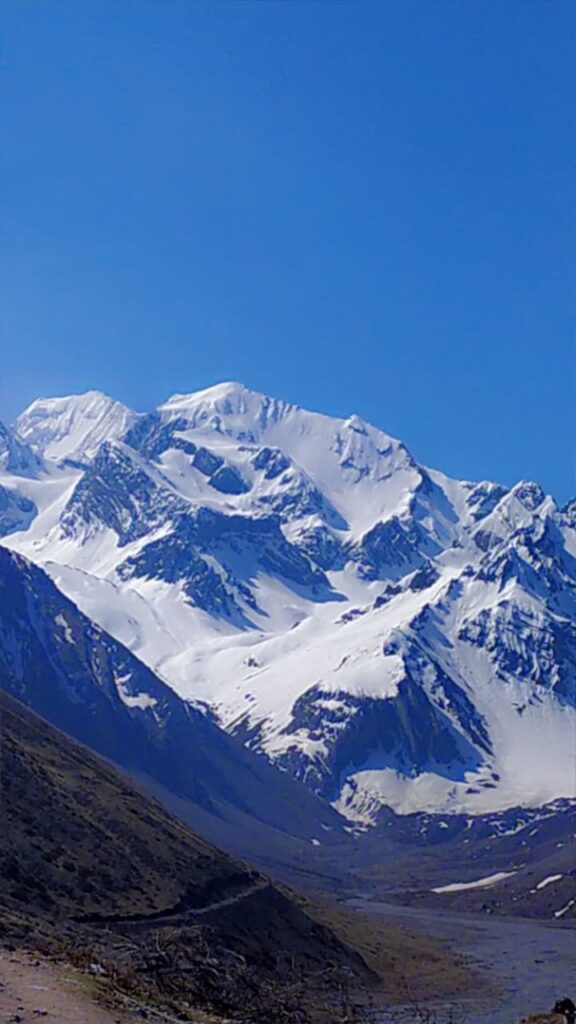
How to reach Kailash Mansarovar Yatra
Kailash Mansarovar yatra will start in the 4th week of April 2025 and you can make your own itinerary or you can follow the itinerary like this.
Kathmandu to Kathmandu by road
Day 01: Arrival in Kathmandu
Kathmandu is the country capital of Nepal and is easily accessible by air and by road from India.
Elevation: 1400m
Day 02: Kathmandu sightseeing
Try to reach Pashupatinath Temple before 09:00 am to attend arti in the main temple. There are so many other small and big temples around Pashupatinath temple. After visiting Pashupatinath Temple visit the ‘Sleeping Vishnu’ Temple (Jal Narayan Temple) and Guheshwari Mata Temple.
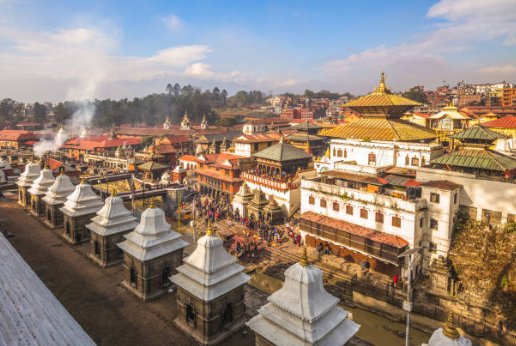
Day 03: Kathmandu to Syabrubesi
In the morning time, you will have to drive to Syabrubesi (2380m) on a bus. The drive to Syabrubesi is not long in distance but the bad road conditions and traffic can make it much tiring, uncomfortable, and time-consuming. The estimated driving time is around 8 hours to cover the distance of 150 km.
Elevation: 2380 m,
Distance Covered: 150 km / 8 hours approx.
Day 04: Syabrubesi to Kyirong
You will be entering China and there can be time taking formalities at the border immigration. Start early to reach the border early to avoid the rush of pilgrims at the border immigration counter. Nepalese border Rasuwagadhi (1850m) is about 15 km from Syabrubesi.
Elevation: 2700 m,
Distance Covered: 125 km
Day 05: Take a day halt at Kyirong for acclimatisation
Tibet’s high altitude and tough climatic conditions can take a toll on your body so you need to acclimatise your body properly.
Day 06: Kyirong to Saga / Zhongba
As you travel to Saga from Keyrong you will cross the Brahmaputra River which is called Yarlung Zangpo in China, and then you will see the vast plans and beauty of Tibet.
Elevation: 4640 m
Distance Covered: 405 km
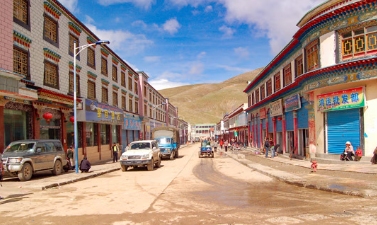
Day 07: Saga to Lake Mansarovar
From Lake Mansarovar, you will get the first glimpse of the holy Mount Kailash. Several checkpoints on the way make the journey tiring and time-consuming.
Elevation: 4590 m
Distance Covered: 461 km
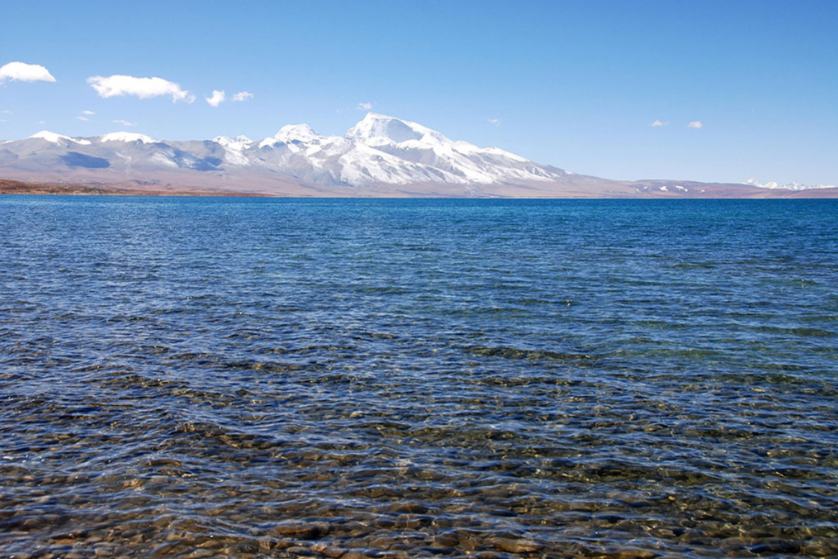
Day 08: Lake Mansarovar to Darchen
The Tibetan Govt has restricted dip baths in the lake and has categorized it as a punishable offense. So bring water in a bucket to bathe. After a bath and prayer, get ready to drive to Darchen.
Elevation: 4575 m
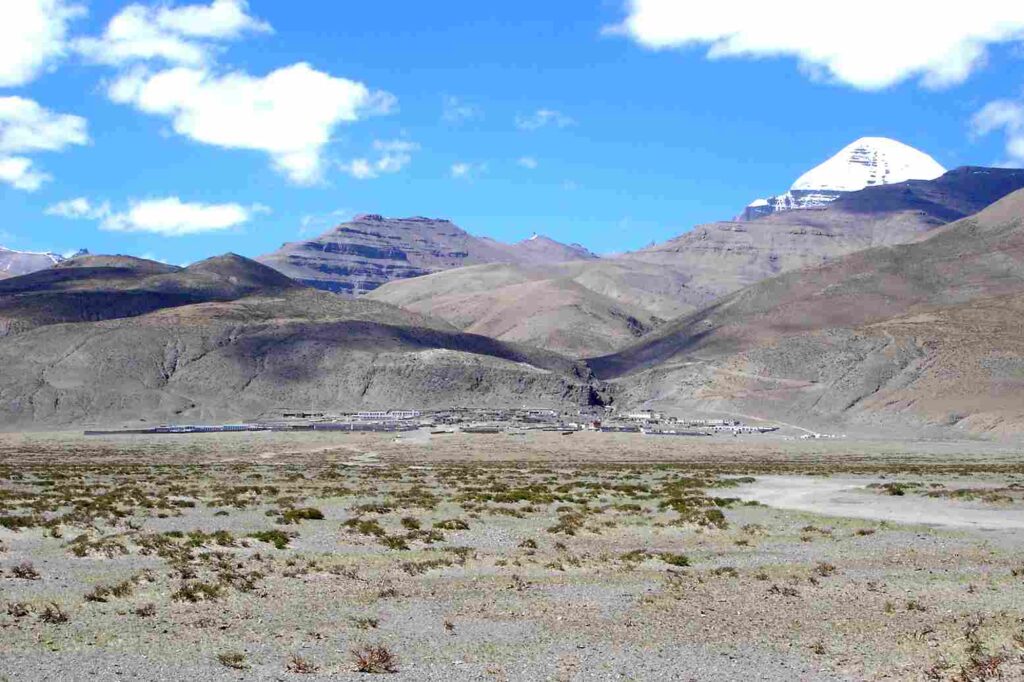
Day 09: 1st Day of kora/parikrama
From Tarboche you will proceed to Yama Dwar which is considered to be the starting point of Kailash Kora. From Yama Dwar the trek starts and ends in Dirakpur Gompa which is 12 km. The trek to Dirapuk Gompa is a high-altitude trek and you may feel a lack of oxygen in the air makes the trek a little difficult so try to take halts at some small shops and tea stalls. On reaching Dirapuk the pilgrims will see the majestic Mount Kailash standing high on the right side of their trek.
Elevation: 5210 m
Distance Covered: 18 km (06 km by vehicles and 12 km on foot)
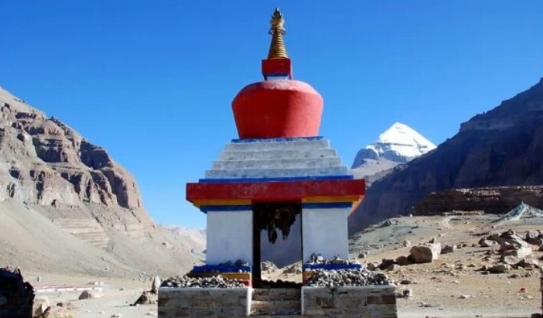
Day 10: 2nd Day of Parikrama the Hardest Day via Gauri Kund
Start early morning before dawn and witness the “Golden Kailash” when the sun rises on Mt. Kailash. This day is the toughest day of this entire trip as the trek goes continuously up to Dolma-La pass (5630 m) and then steep down to Gauri Kunda. Near Dolma La pass you will witness colourful flags around, this place is called Shiva Tsal (Shiva Sthal). The total trek on the second day is about 22 km.
Elevation: 5630 m
Distance Covered: 22 km
Day 11: 3rd Day of Parikrama, last day of trekking
This is the last day of Mount Kailash Parikrama continue your trek down to reach Darchen, the trek of this day is only around 6 km of easy trek. After 6 km you will get to a point where vehicles are available, which you can take to reach Darchen.
On this same day, you can even come to Saga which will save you so much time
Elevation: 4640 m
Day 12: Saga to Kyirong
Elevation: 2700 m
Day 13: Kyirong to Kathmandu
Elevation: 1400 m
Distance Covered: 275 km
An important detail about Kailash Parikrama.
The Kailash Parikrama or Kora in Kailash Mansarovar Yatra is a 3-day long and comparatively hard high-altitude trek so pilgrims with heart or any other physical abnormality conditions are suggested to not to do this trek, instead the pilgrims who cannot do this Kora or Parikrama trek can go to “ASHTAPADA” to touch the feet of Mount Kailash which is considered Lord Shiva.
“ASHTAPADA” is only 3 km from Dirapuk where the two paths divide one for ASHTAPADA and another for YAMA DWAR. Although this 3 km is not easy, it is a very steep slope trek and may take up to 2 to 2:30 hours from one side, but it is doable under the guidance of a local Tibetan guide, Yes you would have to hire a local guide to visit ASHTAPADA from Dirapuk it is a rule of Tibetan Authorities.
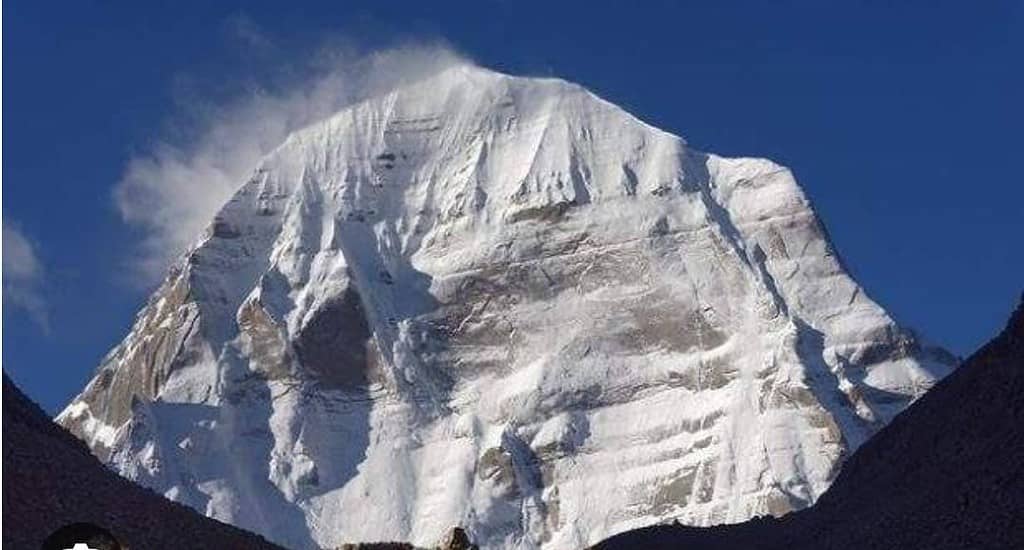
Travel Permit and Visa for Kailash Mansarovar Yatra
Foreign travelers and pilgrims who wish to take a journey to this magical Kailash Mansarovar Yatra require a valid China Group Visa and Tibet Travel Permit. After the necessary paperwork through the legal travel agency or company, they will apply it. It takes 3 to 4 working days from the application period. Besides that, you need other regional travel permits and entry tickets to enter Mt. Kailash for Sacred Walk Kora/Parikrama. You get a group visa and travel permit on paper which is valid until your Kailash journeys. You can’t extend this group visa individually while you are in Kailash Mansarovar Yatra.
Kailash Mansarovar Yatra Altitude
This is a table of the altitude of Mount Kailash and other surroundings.
| S.No. | Name | Altitude | |
| In Meters | In Feets | ||
| 1 | Kailash Mansarovar | 6638 | 21778 |
| 2 | Mansarovar Lake | 4556 | 14948 |
| 3 | Rakshas taal | 4575 | 15010 |
| 4 | Dolma-La pass/ Gaurikund | 5630 | 18471 |
| 5 | Yama Dwar | 4750 | 15500 |
| 6 | Ashtapada | 4800 | 15744 |
| 7 | Dirapuk | 5210 | 17090 |
| 8 | Darchen | 4575 | 15010 |
Things to keep in mind
It is prohibited to take a dip into Mansarovar Lake, but you can take a bucket of water from Mansarovar Lake to take a bath.
On the Second day of Kailash Parikrama/Kora, Devotees must start as early as possible cause this is the hardest day of the whole Parikrama trek so you would have extra time to do the trek easily most importantly Dirapuk is known to offer immense and majestic views of “Golden Kailash”. Golden Kailash is a term that denotes the situation when the sun rises behind Mount Kailash and the red light of the morning sun mixes with White Kailash making the phenomenon of “GOLDEN KAILASH”.
For any query always contact your guides, your travel agency, and local authority officials.
Stay and food
There are many Cities, towns, and villages on the route of Kailash Mansarovar Yatra doesn’t matter which route you take whether it is via the country capital of Nepal Kathmandu, via Nathula pass of Sikkim, or via Om Parvat of Uttarakhand. All the cities, towns, and villages on these routes are typically traditional and independent especially the small villages that may surprise you in so many ways and give you life-long memories.
Every town and village offers stay and veg food at reasonable prices but when you are doing the Kailash Mansarovar Yatra you would have to go with a travel agency that provides stay and food in the package.
Spiritual Experience
Undertaking the Kailash Mansarovar Yatra is not just a physical journey but also a spiritual one. The serene surroundings, the tranquil atmosphere, and the breathtaking views create an ambiance that allows devotees to connect with their inner selves and experience a sense of profound spirituality. The chanting of mantras, the recitation of prayers, and the participation in religious rituals further enhance the spiritual experience. Many pilgrims also engage in meditation and introspection, seeking solace and enlightenment amidst the divine surroundings.
Challenges and Preparations for Kailash Mansarovar Yatra
The Mount Kailash Yatra is not without its challenges. The trek is physically demanding, requiring a good level of fitness and stamina. The area is at a very high elevation and can cause problems related to AMS(Acute Mountain Sickness) so devotees must keep that in mind and keep your body hydrated, avoid junk food and always stay in touch with your guide. The weather conditions can be unpredictable, with extreme cold and heavy snowfall in certain seasons. Pilgrims need to be well-prepared, both physically and mentally, before embarking on this journey. Adequate trekking gear, proper acclimatization, and a positive mindset are crucial for a successful pilgrimage.
How to prepare for Kailash Mansarovar Yatra
The Kailash Mansarovar Yatra and Kailash Parikrama/Kora trek is a difficult high-altitude trek, with high altitudes and long stretches. So it is recommended that you should prepare accordingly. You should start the physical exercise at least 3 months before your Kailash Mansarovar Yatra.
Here are some basic exercises that will be helpful.
- Start jogging at least 2 to 3 months prior. Benchmark is 5 km in 25 minutes.
- Keep an eye on your cardiovascular health and breathing and try to regulate them.
- Do some strength training as well, because you would have to carry your basic luggage(water, rain gear, basic medicine, phone or camera maybe). Strength training like squats, plank, and pushups.
- Stretching the hamstrings, quadriceps, back, and shoulder regularly can prevent strain and sprain on the trek due to the long distances.
Why Kailash Mansarovar Yatra is famous
There are so many reasons that Mount Kailash Yatra is famous and renowned for. We’ll diversify these reasons into three segments first is SPIRITUAL second will be GEOGRAPHICAL and the third will be SCIENTIFIC. Here are known and unknown facts about Mount Kailash.
- Spiritual Significance/importance
- Mount Kailash or Kailash Mansarovar is home to Lord Shiva and his companions.
- All the devotees of lord Shiva whether they are humans, other lords, or Rakshas may be like Ravan came to seek MOKSHA and take blessings of lord Shiva.
- There are two natural lakes alongside Kailash Mansarovar one is Mansarovar Taal (Lake) and the second is Rakshas Taal (Lake).
- Mansarovar taal is believed to be made by Devtas(Lords of Heaven). Mansarovar is a freshwater lake at a height of almost 15000 feet above sea level, the water in Mansarovar Lake remains calm in any given weather condition.
- Rakshas taal is believed to be made by Ravan himself(Yes the same Ravan, ruler of Lanka who was killed By Lord Ram). Ravan was a great devotee of lord Shiva and visited Kailash Mansarovar regularly. When he found that Devtas had made a lake beside Mount Kailash then he also made a saltwater lake west of Lake Mansarovar to please Lord Shiva and to show his superiority and establish his dominance over the Devtas.
Mount Kailash does not only hold spiritual significance in Hindu Dharma but in other religions also like Jainism, Buddhism, and Bonism.
Mount Kailash is sacred to four religions as
- Hindu – Hindus worship this mountain as the home of Lord Shiva and Mata Parvati.
- Jainism – Jain believes that the first Tirthankar, Rishbhdeva attained moksha here.
- Buddhist- Mount Kailash known as Mount Meru in Buddhism is the centre of Cosmology.
- Bon – It is believed that Bonism originated from the kingdom around Mount Kailash
- Geographical Importance
Mount Kailash is believed to be the center of the earth. Mount Kailash is 6666 km from the North Hemisphere poll and exactly twice from the South Hemisphere poll which is 13332 km.
Mount Kailash is surrounded by 6 other mountain ranges and the whole area is full of plants and grasses filled with medicinal properties.
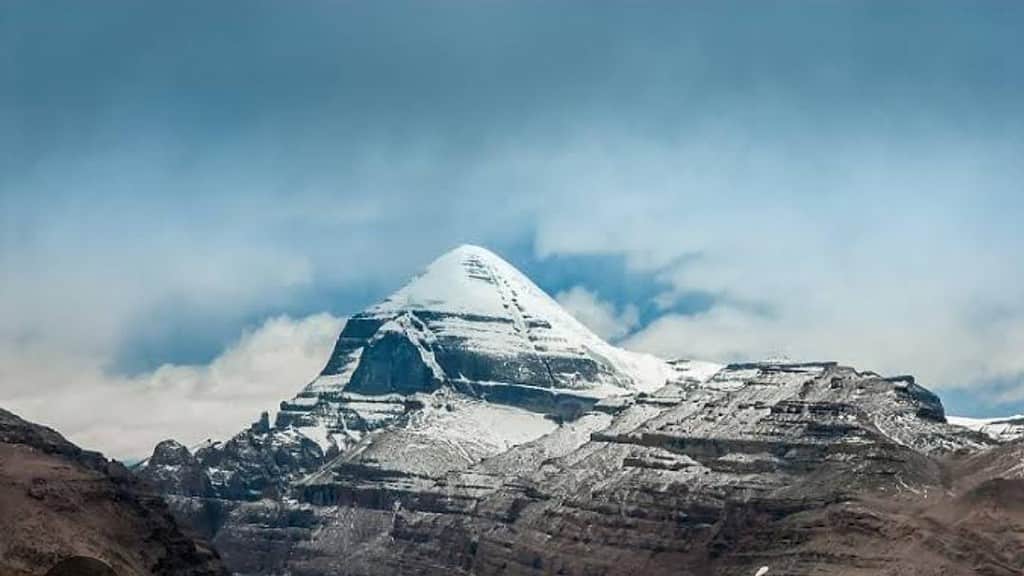
- Scientific Importance
Interesting statement of time speed myth or fact you be the judge
Although there is no machine or way to measure that if time is moving slower or faster, almost all people like pilgrims, tourists, climbers, mountaineers, and even some scientists also who have done Kailash Mansarovar Yatra have reported that their hair and nails have grown faster than normal almost the equivalent of one month in five to seven days.
- Conservation and Responsible Tourism
As the popularity of the Mount Kailash Yatra grows, it is essential to emphasize the importance of responsible tourism and conservation. Pilgrims and visitors must respect the sanctity of the place, follow eco-friendly practices, and ensure the preservation of the natural environment. Local authorities and organizations are working towards sustainable tourism initiatives to protect the fragile ecosystem and maintain the spiritual essence of the pilgrimage.
Conclusion
Kailash Mansarovar Yatra is a journey that transcends the physical realm and delves into the depths of spirituality. It offers a unique opportunity for devotees to connect with their faith, immerse themselves in the beauty of nature, and experience a sense of divine presence. This pilgrimage, with its historical and religious significance, challenging route, and spiritual experiences, is a testament to the enduring power of faith and the profound impact of embarking on a spiritual journey in the lap of the Himalayas.

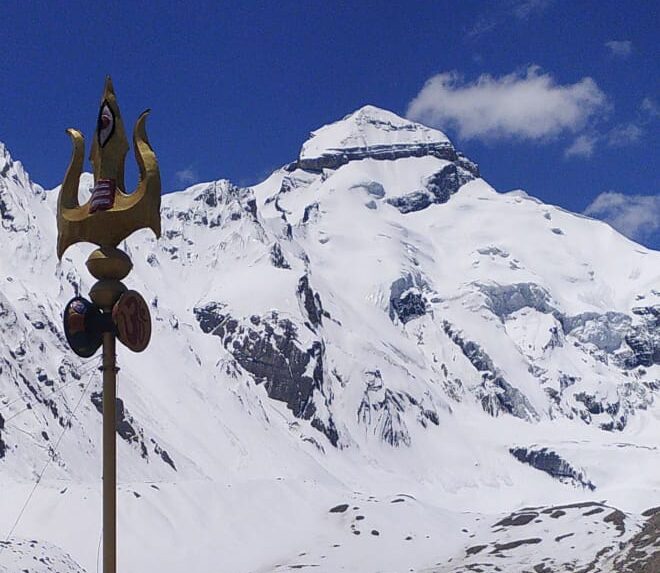
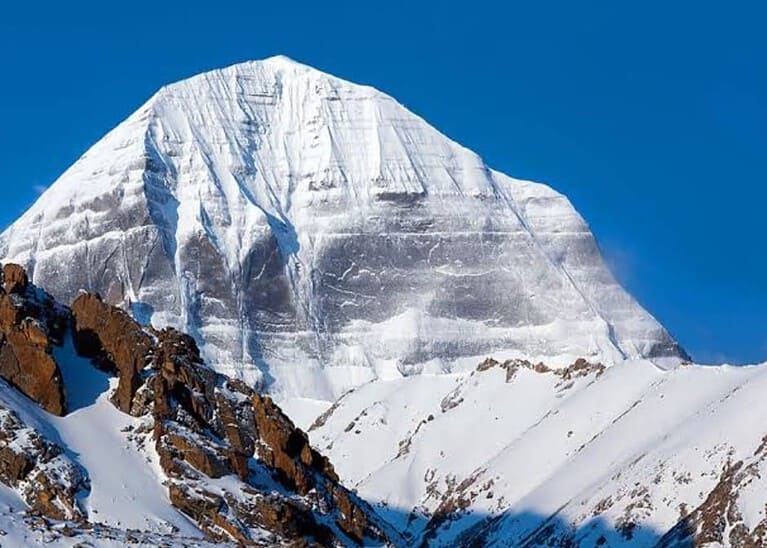
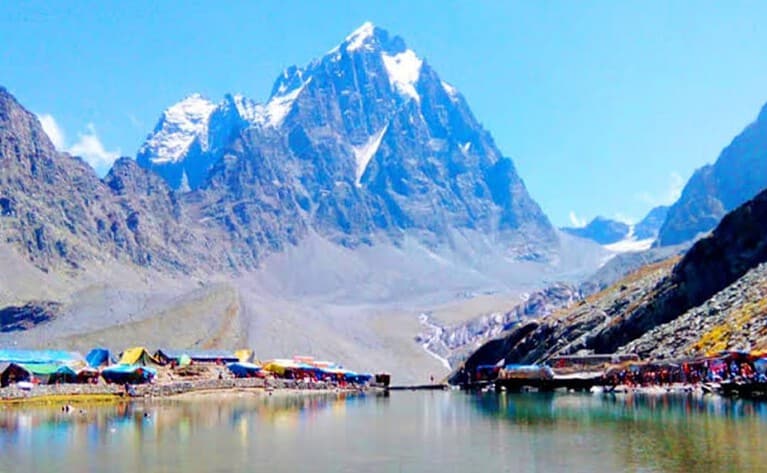
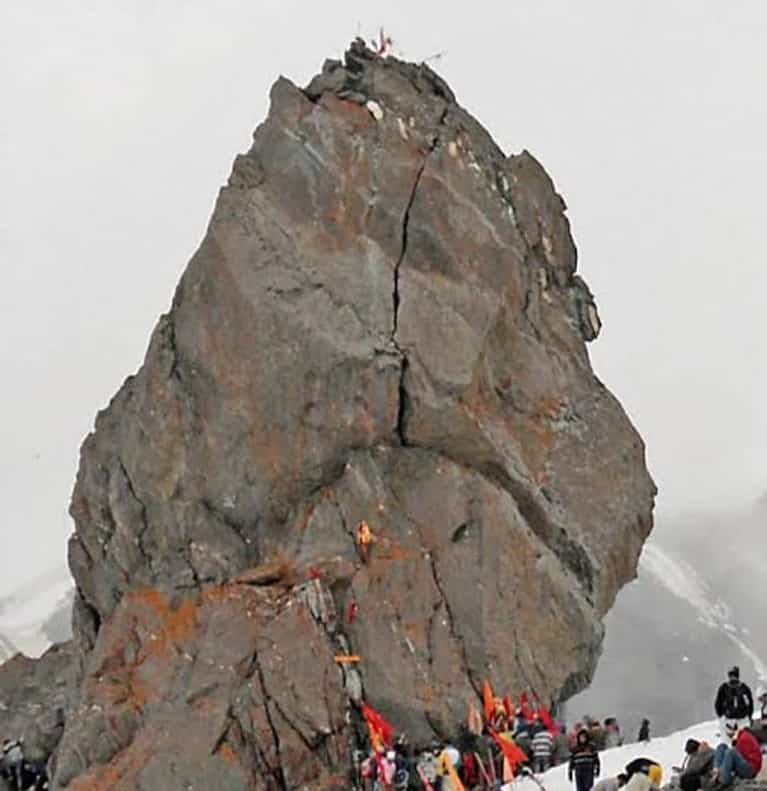
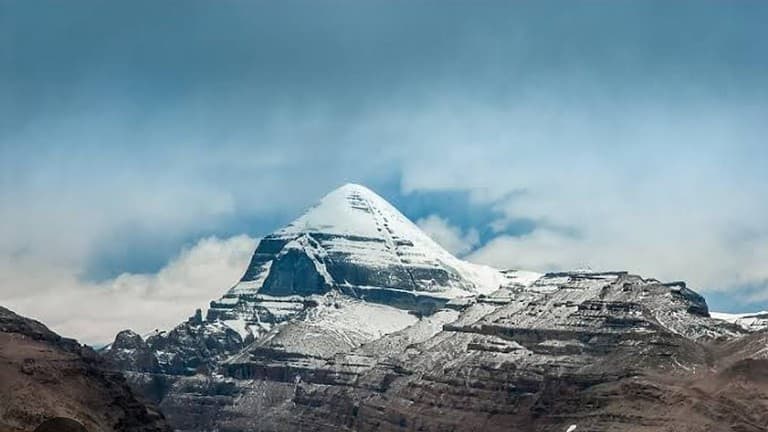
8 Comments